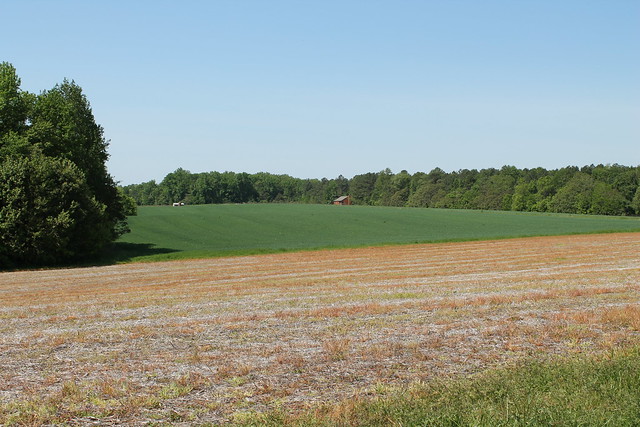
At one time the land that is now Powhatan State Park was used as farm land and had dairy and poultry operations.
From 1967 until 1973, I was employed at Beaumont School for Boys, now Beaumont Juvenile Correction Center, first as a teacher in the academic school, then as Assistant Principal of that school and then as Assistant Superintendent. The last two of those jobs required that I live on campus. As one can probably imagine, it was a stressful life for those who lived there as we were effectively "on call" 24 hours a day, 365 days a year. I would hasten to add that it could also be very rewarding; I felt we had very positive influence on many of the students there and I saw the evidence of that for many years afterward, periodically running across many past students in the "real world" who were living productive lives.
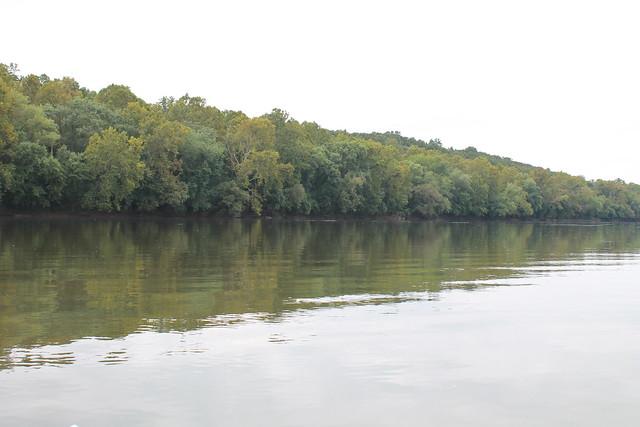
A beautiful stretch of the James River embraces the banks of the park.
During my tenure, Beaumont consisted of over 2,000 acres of land, most of which has now become the new Powhatan State Park. At that time, a good portion of the land was used for farming, as we produced a good portion of the food that was consumed there. There were full dairy and poultry operations and some of the land was cultivated to raise fruits and vegetables. The vast majority, however, consisted of open fields, beautiful hardwood forest, surrounded on two sides by a beautiful stretch of the James River. As such, the tract served as a great "perk" for those of us who lived and worked there; thousands of acres of land, miles of river access all of which was reserved for our use. The hunting and fishing were great, but personally, the opportunity to just "get away", driving the miles of farm trails or just walking in the woods, was the greatest benefit.
There was an especially memorable aspect of this property that I have never forgotten and my thoughts have returned to it many times over the years. Somewhere in the woods, perhaps 200 yards from the river, was Gold Dust Springs. Over the years, and before I arrived, a small cabin had been built, a very rustic picnic area developed and it became the site of many employee barbecues. I spent a lot of time (often overnight) by that cabin, helping, as best I could, the preparation for these events; always well attended and very much enjoyed. I dare say that anyone who enjoyed these get-togethers has remembered these times and these occasions for the rest of their lives.
Of particular interest was the spring itself. It had been contained in a small cinderblock enclosure (as I recall, about 2 feet square) and produced crystal clear, very cold and delicious water. Perhaps, though, the most unusual aspect of the spring was the distinctive "gold dust" that was mixed in with the sand at the bottom of the enclosure. One can only assume it was not really gold but certainly its color and its sparkle in the sunlight justified the name.
All in all, the school, and the beautiful land on which it sits, holds many memories…..most very happy ones. So I was pleased when I read that the property would become a State Park, available to the public and I looked forward to returning once the park was open.
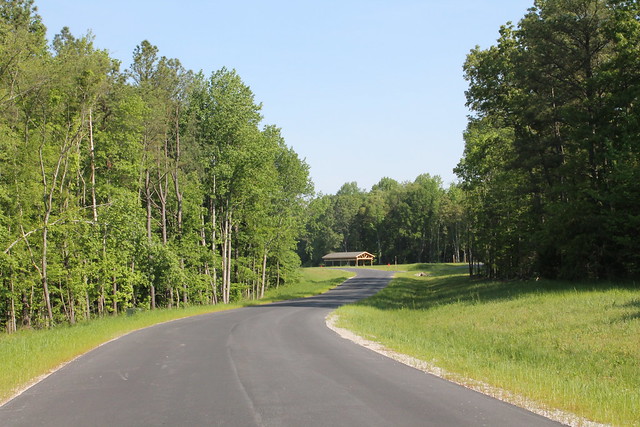
A winding road, where once were farm roads, greets this visitor during his trip down memory lane.
Upon that return, I first noticed that little had changed in the vicinity of the park. The little village/crossroads which is Michaux remains just as I remembered and the Maidens Bridge over the James River is as it looked when it replaced the old iron bridge that was lost in the flood following Hurricane Camille in 1969; I watched it fall into the river.
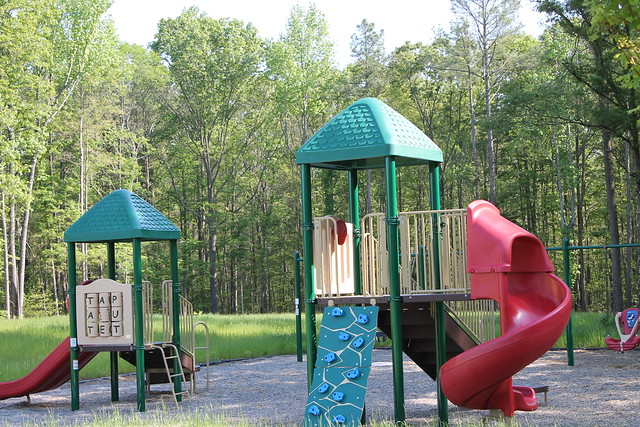
Facilities offered at the park are picnic pavilions, restrooms and a playground area.
Since the entrance to the park is brand new, it was difficult to "get my bearings" as we entered. There are still open fields and of course the dense hardwood forest, actually looking much the same as they did almost 50 years ago. The facilities (Playground, picnic pavilions, restrooms, and paved roads) are very well done but offered no touchstone to the past. It was only when the silos of the adjacent dairy farm came into view that my internal compass began to align. And, while not a geographic reference, the wild turkey that hurried across the road brought back memories of her ancestors who once lived here and apparently survived the best efforts of hunters.

Gold Dust Trail is a .81 mile walk into the woods and leads to the river.
It was however, a review of the provided Trail Guide that got my attention; specifically the mention of Gold Dust Trail, a .81 mile walk through open fields to the woods and down to the river. So with my companions, whom I had briefed on my history with the spring and the cabin, we set off. Initially, we walked on a simple path cut through open fields of grass and weeds, liberally sprinkled with wild flowers and honeysuckle. Eventually, the fields gave way to a path that had obviously been there for years, winding down through a beautiful forest full of large oak trees and paralleling a deep ravine and a stream flowing with clear water.
The walk was beautiful; quiet, not arduous and indeed, very soothing. But I will admit, I kept hoping that somehow, some tangible reminder of my past experience might remain. But after almost 50 years? Very unlikely.
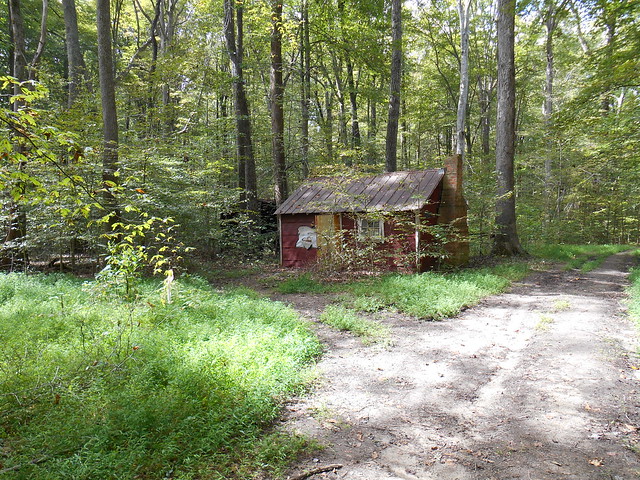
An abandon cabin still stands along Gold Dust Trail.
But unlikely does not mean impossible, for suddenly (at least for me), there it was. Still standing after at least 50 years. Still with a roof, a door, a fireplace and one chair, that could have been (but probably wasn't) one I sat on all those years ago. Not beautiful (it never was), probably a step or two beyond rustic……but still there! And for me, all those memories of the place became more real.
Unfortunately, my retained memories did not include the exact location of the spring and a quick survey of the area did not reveal its location. While I can recall exactly what it looked like (and how it tasted), I cannot remember its location relative to the cabin. Disappointing no doubt, but leaving open the possibility of further exploration on my next trip.
The world has undergone amazing changes in the last 50 years; some good and some bad. But I left Powhatan State Park with refreshed memories from the past and a sense of relief that, at least on 2,000 acres of Powhatan County, nature…and memories, thrive.
Learn more about Powhatan State Park amenities and more here.
